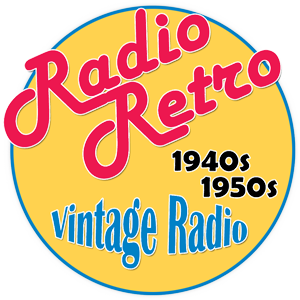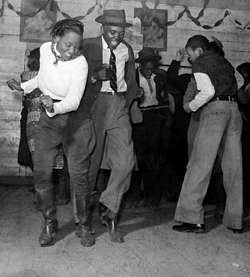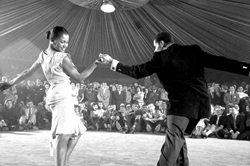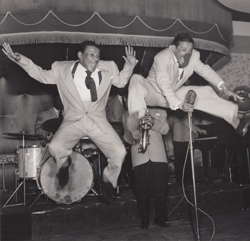 Dance Styles from 1940 to 1959
Dance Styles from 1940 to 1959
A Journey Through Swing, Rock 'n' Roll, and More
The Evolution of Dance
The 1940s and 1950s were a golden era for dance, influenced by wartime morale, jazz, and the emergence of rock 'n' roll. From the energetic Lindy Hop to the smooth sophistication of the Mambo, dance styles evolved with cultural shifts and technological advancements in music. This article explores some of the most popular dance styles from 1940 to 1959, their origins, and their lasting impact on dance culture.
Swing and the Lindy Hop
The 1940s were dominated by swing dance, a style that had gained popularity in the previous decade. The Lindy Hop, originally developed in the late 1920s and 1930s, was a favourite during World War II. Named after aviator Charles Lindbergh’s famous 1927 "hop" across the Atlantic, the Lindy Hop was an acrobatic and fast-paced dance that reflected the vibrant jazz music of the era.
During World War II, servicemen and women stationed abroad helped spread swing dancing across Europe. Variations of swing emerged, including the East Coast Swing, the West Coast Swing, and the Balboa. These styles allowed dancers to adapt to different tempos and musical styles, ensuring that swing remained a staple in dance halls throughout the decade.
 The Jitterbug: A Wartime Favorite
The Jitterbug: A Wartime Favorite
A derivative of the Lindy Hop, the Jitterbug gained immense popularity during the 1940s, particularly among young soldiers and their partners. It was an energetic, often improvised dance that matched the big band and boogie-woogie music of the time. The Jitterbug’s wild, enthusiastic movements made it one of the most visually exciting dance forms.
The Foxtrot: Timeless Elegance
For those who preferred a smoother and more sophisticated dance, the Foxtrot remained a classic choice in the 1940s and 1950s. With flowing movements and syncopated rhythms, the Foxtrot was a staple in ballrooms and social dance events. As the music evolved, the dance adapted, allowing dancers to move gracefully across the floor to slow and fast tempos.
The Rumba: A Latin Sensation
The postwar period saw a surge in the popularity of Latin American dance styles, with the Rumba taking centre stage. Originating in Cuba, the Rumba combined slow, sensuous movements with complex rhythms. It became a ballroom dance favourite and was often performed in Latin jazz and big band music. Its popularity paved the way for the later dominance of Latin dances, such as the Mambo and Cha-Cha.
 The Mambo: The Rhythm of the 1950s
The Mambo: The Rhythm of the 1950s
By the late 1940s and into the 1950s, the Mambo became a cultural phenomenon, thanks to musicians like Pérez Prado and Tito Puente. Characterised by fast footwork, syncopated beats, and sharp body movements heavily influenced by Afro-Cuban rhythms.
Mambo fever swept through the United States, particularly in cities like New York, where Latin dance clubs flourished. The Palladium Ballroom became the epicentre of the Mambo craze, attracting dancers from all backgrounds eager to master this exciting style.
The Cha-Cha: A Playful Dance Innovation
Emerging in the 1950s, the Cha-Cha was a natural evolution of the Mambo. Created by Cuban composer Enrique Jorrín, the Cha-Cha featured a distinct syncopated beat that was easy for dancers to follow. Its name derives from dancers’ feet shuffling across the floor. The Cha-Cha quickly became one of the most accessible and widely danced Latin styles in social and competitive settings.
 Rock ‘n’ Roll and the Birth of a New Dance Era
Rock ‘n’ Roll and the Birth of a New Dance Era
As the 1950s progressed, a new musical genre revolutionized dance culture: rock ‘n’ roll. Influenced by rhythm and blues, country, and gospel music, rock ‘n’ roll had an electrifying energy that called for equally dynamic dance moves.
One of the most popular rock ‘n’ roll dances was the Hand Jive, a rhythmic sequence of hand movements and claps that became a teenage craze. However, the most famous rock ‘n’ roll dance was the Jive, a fast-paced, high-energy partner dance that evolved from swing styles.
Elvis Presley’s hip-shaking performances and movies like "Rock Around the Clock" (1956) helped cement rock ‘n’ roll dancing as a defining feature of the 1950s youth culture. The twist, which would later explode in the early 1960s, also had its roots in this era.
The Stroll: A Line Dance for the Ages
Unlike the partner dances of the past, the Stroll was a line dance that emerged in the late 1950s. Popularized by television dance shows like "American Bandstand," the Stroll featured two lines of dancers facing each other as pairs took turns "strolling" down the centre. This simple but stylish dance allowed for creativity and became a hit among teenagers.
The Bop: A Youthful Expression of Freedom
A fast-paced solo dance, the Bop was a response to the energetic beats of rock ‘n’ roll. Unlike the Jitterbug, the Bop didn’t require a partner, giving dancers the freedom to move however they felt. It was especially popular in high school gymnasiums and dance halls where teens could express themselves freely.
The Legacy of 1940s and 1950s Dance Styles
The dance styles of the 1940s and 1950s laid the foundation for many modern dance forms. Swing and rock ‘n’ roll inspired later styles like disco and breakdancing, while Latin dances like the Mambo and Cha-Cha became permanent fixtures in ballroom dance competitions.
These styles are still practised in vintage dance clubs, swing dance events, and ballroom competitions. Shows like "Dancing with the Stars" and movies like "Dirty Dancing" have kept the spirit of these classic dances alive, proving that the rhythm of the past still resonates with dancers today.
From the lively Swing and Jitterbug to the sultry Rumba and electrifying rock ‘n’ roll, the dances of the 1940s and 1950s reflect an era of joy, resilience, and cultural fusion. Whether you’re a dance enthusiast or love the music of this time, these iconic styles continue to inspire new generations of dancers.